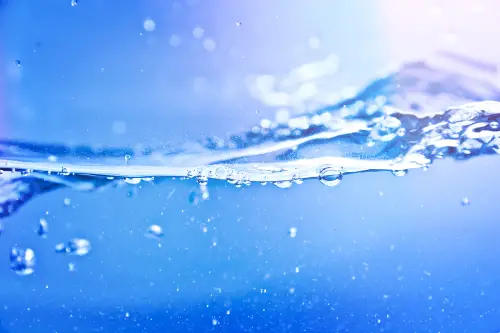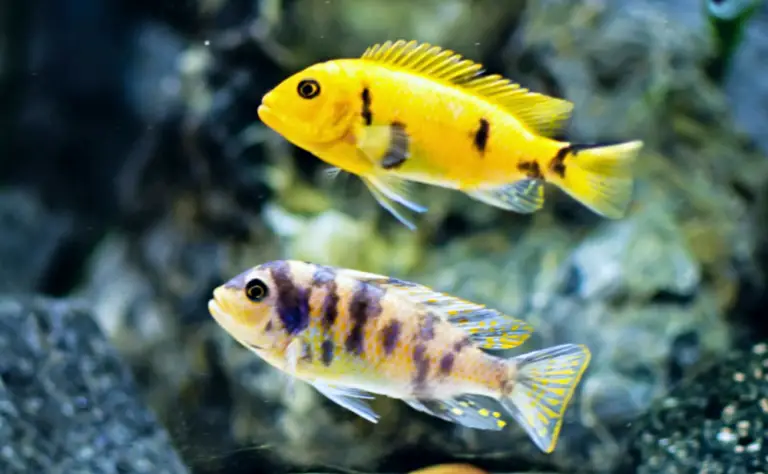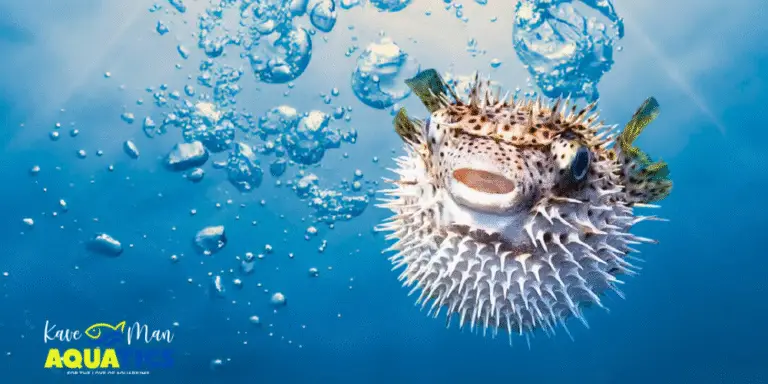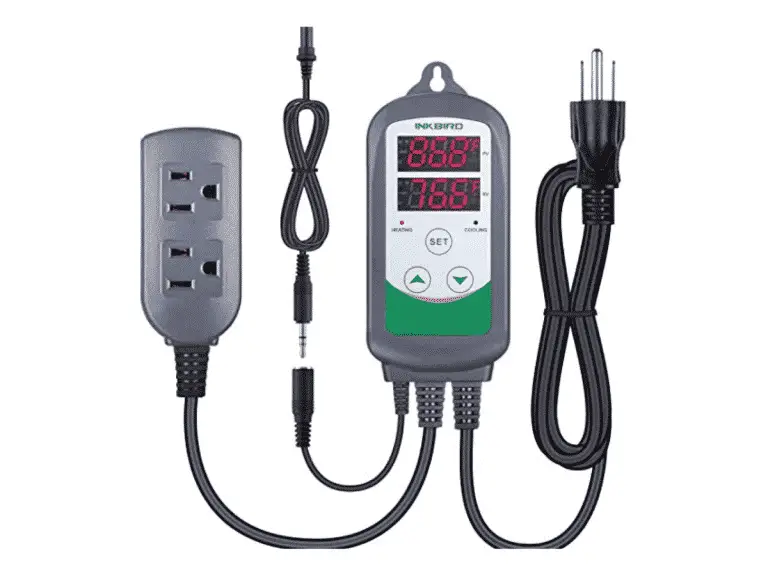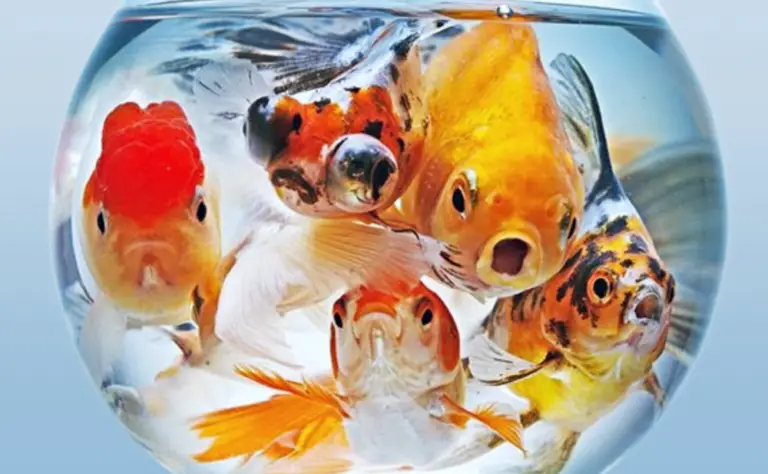Aquarium Surface Agitation and Aeration (6 Easy Methods)
Surface agitation is often overlooked, especially by beginners. It may not be the most exciting part of owning an aquarium but it sure is important! In this article, we’ll explain what it is, why it’s important, and the various ways in which you can create surface agitation in your aquarium.
What Is Surface Agitation
Imagine a puddle of water that is calm, still and smooth. Now, throw a stone in the puddle. The stone will create ripples on the puddle’s surface! Congrats, that’s surface agitation! “Agitating” the water’s surface. It can’t get any more simple than that.
It’s an often forgotten aspect of aquariums, but it is very important for most tanks.
Why Is Surface Agitation Important
Your fish can drown due to the lack of oxygen in the water! Surface agitation helps oxygenate your aquarium’s water.
The oxygen that your fish breath works its way down into your tank from the surface. The bigger the surface area, the more oxygen can penetrate the water. And of course, the water surface area is determined by the size of your aquarium.
When there’s surface agitation, the layer of water that is in contact with the air is constantly changing. The agitation increases the surface area of your tank.
Agitating the water surface help promotes gas exchanges. It increases the rate at which oxygen dissolves in the water as well as the rate at which carbon dioxide is released from the water.
So naturally, the amount of oxygen in your aquarium plays a major role in determining how many fish you can keep in a single tank.
A pretty convincing reason, right?
The “Perfect” Amount Of Surface Agitation and Aeration
So, is there a thing such as the “perfect” amount of surface agitation? Well, let’s put it this way: Surface agitation can either be insufficient or excessive. And of course, the amount depends on the type of fish and plants.
Insufficient
It can be difficult to tell whether you’re giving enough oxygen to your fish because they might not show any symptoms at first. The most obvious sign that there is insufficient oxygen is if you see your fish regularly gasping at the surface. They may also hang out around the filter output which tends to have high oxygen concentration near the surface. Your bottom-dwelling fish will similarly swim to the upper part of the aquarium.
Excessive
Yes, there is a thing such as having too much oxygen. If you see your fish being whisked around the aquarium or struggling, you need to reduce the amount of circulation. Some species prefer calm or still waters whereas others require a consistent amount of current.
It’s always a must to do proper research on the fish and plants that you’ll want in your tank beforehand. You’ll want to recreate their natural habitat – including their surface agitation preferences.
How To Create Surface Agitation and Aeration
Filters
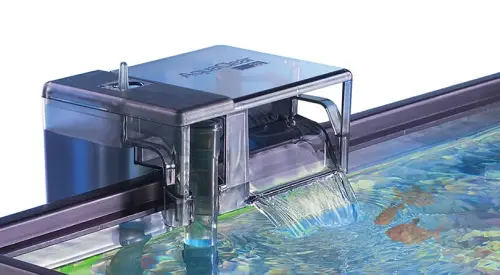
Chances are that you already have a filter set up on your tank. Whether you have a HOB (hang on back) filter, a canister filter, or a sponge filter, each will contribute to the water’s surface agitation.
A HOB filter’s output drops water into the surface of the tank and, therefore, creates surface agitation. For canister filters, you need to point the return up towards the surface of the water to agitate it. Lastly, sponge filters can either use an air stone or an airline to operate. The bubbles will rise to the surface and agitate the surface of the water.
Additionally, filters help circulate water from the bottom of the tank to the top – increasing its water concentration. However, the placement of your filters matters in order to prevent “dead spots” (low water circulation areas) in your tank.
Power Heads
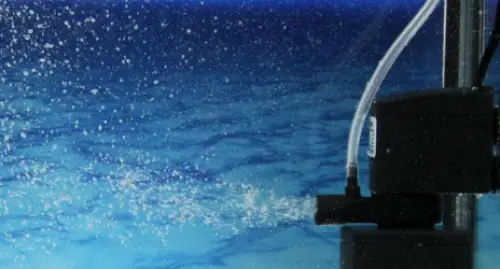
If your filter isn’t enough, a power head might be the answer. A power head siphons the water up out of the tank and mixes it with air as it’s expelled. Essentially, it boosts water movement. This way, your tank’s surface agitation and aeration will increase. Power heads can also be useful to eliminate those “dead spots”. It’s also an excellent choice for larger tanks.
Wavemakers
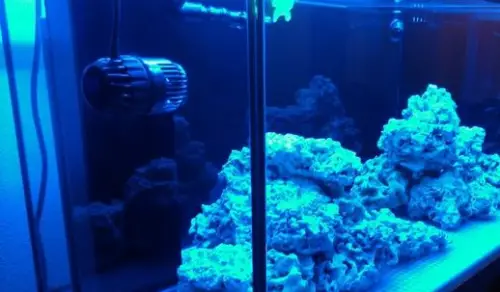
Wavemakers are simply aquatic fans – circulating the water and creating surface agitation. The position of the wavemakers determines the current of the water. By aiming the fan upwards, the wavemaker is more capable of agitating the surface water. Wavemakers also have other benefits for your aquarium.
Aquarium Bubblers
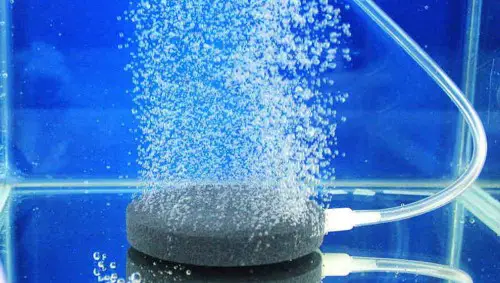
Aquarium bubblers are commonly used by beginners and small tank owners. They are a more affordable option to create surface agitation in your aquarium. Bubblers produce hundreds of… well, bubbles! As the bubbles rise, they agitate the surface of the water.
There are various types of aquarium bubblers; which include: airstones, bubble wands, LED bubblers, air pumps, and bubbler ornaments/decorations.
Spray Bars
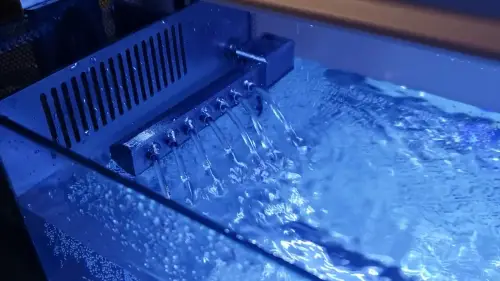
Spray bars… a piece of pipe with holes in it! It can sit on your filter outlet and distributes water evenly and gently. And of course, spray bars create surface agitation. Even though spray bars are more gentle, they can still help oxygenate the water. Spray bars are the perfect option if you’re the proud owner of Bettas or Gouramis.
Lily Pipes
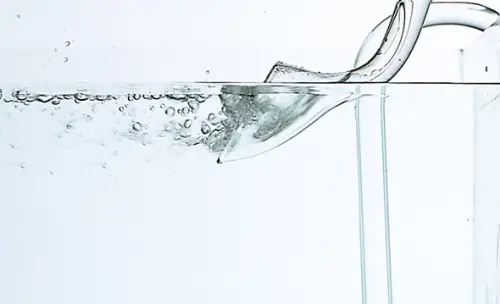
Lily pipes owe their name to the Calla Lily because the end piece is modelled after the flower of this plant. It’s a beautifully constructed glass pipe that sits on the outflow of your aquarium filter. It distributes water across the surface of your aquarium, agitating it.
Lily pipes blend in with your aquarium, which makes it a perfect option if you’re obsessed with your tank’s aesthetics. It recreates a natural-looking environment. Not only do lily pipes help with surface agitation, but they can also be used to control the pressure of the outflow on your filter.
Conclusion
This may not be every fishkeeper’s favorite topic, but it’s a topic worth covering. Surface agitation and aeration is crucial for your aquarium to thrive. At least now you understand its importance and the various ways in which you can implement it in your tank.
Always be sure to do thorough research based on your fish, plants, and the tank you choose.
Want to read another overlooked but equally important topic in the fishkeeping hobby? Start off with the Nitrogen Cycle.

